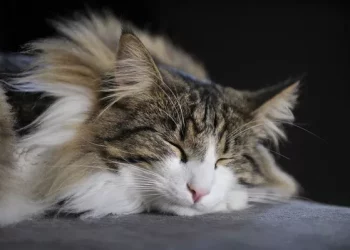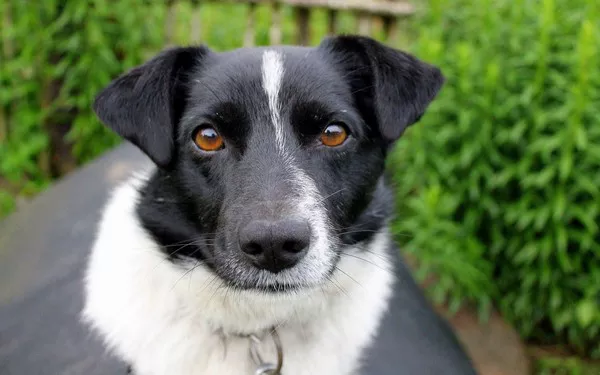The Egyptian Mau is a captivating breed of domestic cat, well-known for its striking appearance, spotted coat, and affectionate nature. As one of the few naturally spotted breeds, the Mau has a rich history and cultural significance, especially in relation to ancient Egypt. In this article, we will explore the origins of the Egyptian Mau, its historical context, and how it has evolved into the beloved pet we recognize today. By delving into the breed’s roots, we can appreciate its unique characteristics and the role it has played throughout history.
The Historical Context of the Egyptian Mau
Ancient Egypt and Cats
Cats have been revered in ancient Egyptian culture for thousands of years. They were seen not only as pets but also as sacred animals. Evidence of domestic cats in Egypt dates back to around 4,000 years ago, with archaeological findings suggesting that they were valued for their ability to control rodent populations and protect food stores. This mutual relationship between humans and cats laid the foundation for the domestication of feline companions.
The Egyptians worshipped cats, attributing divine qualities to them. The goddess Bastet, often depicted as a lioness or a woman with the head of a lioness, was the protector of home and family and represented fertility and motherhood. Her association with cats further elevated their status in society.
Depictions in Art
The Egyptian Mau is frequently depicted in ancient Egyptian art and artifacts. Hieroglyphics, wall paintings, and sculptures often feature spotted cats that closely resemble the modern Mau. These representations highlight the breed’s historical significance and suggest that the Mau has been part of Egyptian culture for millennia.
The Physical Characteristics of the Egyptian Mau
Unique Appearance
The Egyptian Mau is easily identifiable due to its distinctive features:
Spotted Coat: The Mau’s coat is its most notable feature, characterized by randomly distributed spots that can vary in shape and size. The spots can appear in different colors, including silver, bronze, and smoke.
Muscular Build: This breed has a strong, athletic body, which contributes to its agility and grace. The Mau is medium-sized and well-proportioned, with a muscular frame.
Eyes: The Egyptian Mau’s large, almond-shaped green eyes are striking and expressive, often described as having an enchanting quality.
Genetic Factors
The unique spotted coat of the Egyptian Mau results from specific genetic factors. The primary gene responsible for the spotted pattern is the agouti gene, which influences the distribution of pigmentation in the fur. This gene allows for the striking coat patterns that distinguish the breed from others.
The Journey of the Egyptian Mau: From Ancient Times to Modernity
Evolution and Adaptation
While the exact origins of the Egyptian Mau are challenging to trace due to limited historical records, it is widely believed that the breed has evolved over centuries in Egypt. The spotted coat likely provided an advantage in the wild, offering camouflage that aided in hunting and survival. The Mau’s ability to blend into its environment may have been crucial for catching small prey while avoiding larger predators.
As domestication progressed, these cats became integrated into households, where they were cherished companions. Their natural hunting abilities made them ideal pets for Egyptian families, who appreciated their companionship as well as their practical skills in pest control.
Transition to Modern Breeding
In the 20th century, interest in the Egyptian Mau grew beyond its native land. The breed began to capture the attention of cat enthusiasts worldwide, particularly in the United States. In the 1950s, a few cats resembling the Egyptian Mau were imported to North America, leading to the formal recognition of the breed.
Breeders in the United States focused on preserving the Mau’s unique traits while improving health and temperament. This led to a concerted effort to establish breed standards, ensuring that the Egyptian Mau retained its distinctive features.
The Egyptian Mau in Popular Culture
Symbolism and Significance
The Egyptian Mau’s connection to ancient Egypt continues to resonate in popular culture today. These cats are often depicted in literature, art, and media, emphasizing their exotic appearance and historical ties. Their portrayal as mysterious and graceful creatures has contributed to their appeal.
See Also: How Fast Can Egyptian Maus Run?
Cats in Modern Society
In contemporary society, the Egyptian Mau is celebrated as a beloved companion. Their affectionate and playful nature makes them popular pets among cat enthusiasts. With a relatively small gene pool, responsible breeding practices are essential to maintaining the health and vitality of the breed.
The Global Spread of the Egyptian Mau
International Recognition
The Egyptian Mau’s rise to popularity is not confined to its country of origin. International cat registries, such as The International Cat Association (TICA) and the Cat Fanciers’ Association (CFA), have recognized the breed, allowing it to gain a foothold in various countries.
Current Distribution
Today, Egyptian Maus can be found in homes around the globe. Their unique appearance and charming personalities have attracted a diverse fan base. Breeders are dedicated to promoting the breed and ensuring its well-being through responsible breeding practices.
Care and Maintenance of Egyptian Maus
Diet and Nutrition
To maintain optimal health, Egyptian Maus require a balanced diet rich in high-quality proteins, vitamins, and minerals. A diet formulated specifically for cats, supplemented with fresh water, is essential. Regular feeding schedules help maintain healthy weight and energy levels.
Exercise and Play
As an active and energetic breed, Egyptian Maus need regular exercise to thrive. Interactive playtime, such as using toys or engaging in fetch games, is vital for their physical and mental stimulation. Providing opportunities for climbing and exploration, such as cat trees or shelves, also contributes to their well-being.
Grooming Needs
The short coat of the Egyptian Mau requires minimal grooming. Regular brushing helps reduce shedding and maintain a healthy coat. Routine check-ups with a veterinarian are essential for monitoring overall health, vaccinations, and preventive care.
Health Considerations
Common Health Issues
Like all breeds, the Egyptian Mau is prone to certain health conditions. Responsible breeders prioritize genetic health to minimize risks. Common issues may include:
Hypertrophic Cardiomyopathy (HCM): A hereditary heart condition that affects many cat breeds, including the Mau.
Obesity: Due to their muscular build, it is essential to monitor their weight to prevent obesity-related health issues.
Regular Veterinary Care
Regular veterinary visits are crucial for monitoring health and catching potential issues early. Preventive care, including vaccinations, dental care, and parasite control, is essential for maintaining the overall health of Egyptian Maus.
Conclusion
The Egyptian Mau is a breed steeped in history, culture, and unique characteristics. From its ancient roots in Egypt to its modern-day presence around the world, the Mau’s journey is a testament to its enduring appeal. Its spotted coat, affectionate nature, and playful demeanor make it a cherished companion for many.
As we continue to explore the origins and significance of the Egyptian Mau, we gain a deeper appreciation for the intricate bond between humans and cats. By understanding the breed’s history, care requirements, and health considerations, we can ensure that these remarkable cats thrive in our homes, preserving their legacy for future generations. Whether you are a long-time admirer or a prospective owner, the Egyptian Mau offers a unique blend of beauty and companionship that enriches our lives.
Related Topics:


























